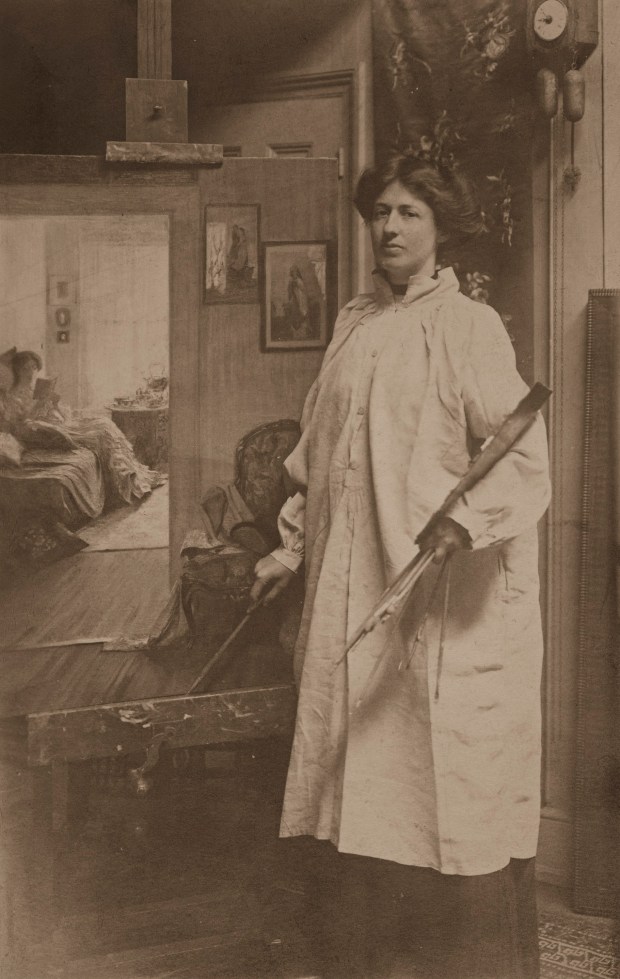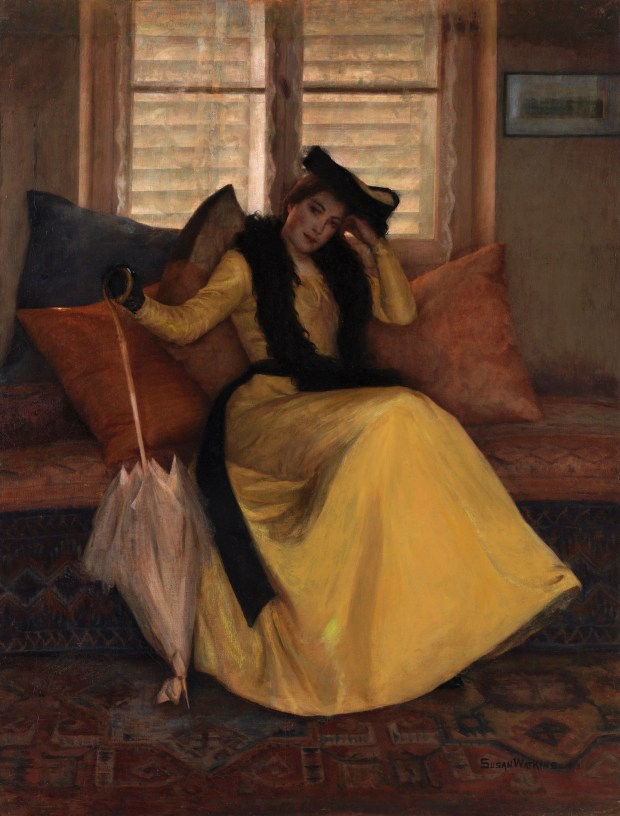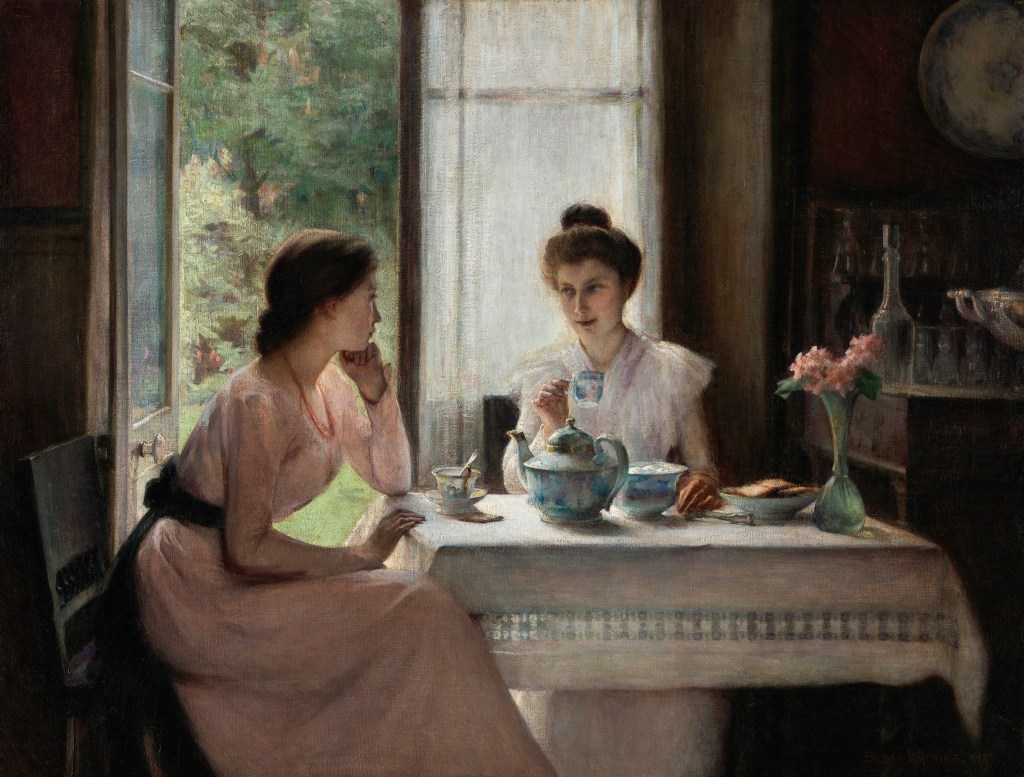 A gelatin silver print of Susan Watkins in her studio, 1910, by Edwin Scott Bennett. (Courtesy/Chrysler Museum of Art)
A gelatin silver print of Susan Watkins in her studio, 1910, by Edwin Scott Bennett. (Courtesy/Chrysler Museum of Art)
She had established herself as a tour de force in the highest circles of Western art on both sides of the Atlantic.
Her paintings were shown in Paris and written about in New York by 1913, the year she died at age 38 in Norfolk. Her husband inherited a large body of her work, unsold and stored at their home on South Duke Street, and later bequeathed it to the local museum.
Today the Chrysler Museum of Art owns the largest repository of work by American artist Susan Watkins. And many of her paintings are now on display.
The exhibition, “Susan Watkins and Women Artists of the Progressive Era,” opened in October and runs through Jan. 11.
Showcasing more than Watkins’ individual skill, the exhibit displays her paintings alongside those by her contemporaries, highlighting the work of female artists during the early 20th century — when women, if not denied admission, were often charged higher tuition and then restricted in their studies to all-female classes at prestigious art academies.
Watkins, who was born in 1875 into a well-to-do California family, took a career path that was traditional for an artist of her time. When she was an adolescent, her family moved to New York City, where her father took a job as a newspaper editor and she enrolled in a prestigious school, the Art Students League.
When she was in her early 20s, her father died and she moved to what was considered the capital of the Western art world: Paris.
In France, she took up studies at the elite fine art academies such as the Académie Julian and the Académie Viti, and by 1899 she’d begun showing her paintings at premier European and American art venues.
 “Lady in Yellow (Eleanor Reeves)” by Susan Watkins. (Ed Pollard/Chrysler Museum of Art)
“Lady in Yellow (Eleanor Reeves)” by Susan Watkins. (Ed Pollard/Chrysler Museum of Art)
Her paintings hung in exhibitions at the Paris Salon, the National Academy of Design in New York and the Art Institute of Chicago and were praised in the press.
“A lot of critical reviews of these exhibitions would mention her work,” Corey Piper said, “and often mention her as one of the most prominent American women working in Paris.”
Piper, the former Brock Curator of American Art at the Chrysler, curated the exhibition featuring Watkins before recently taking a new job in Richmond at the Virginia Museum of History & Culture.
Piper characterized Watkins’ work as “very much rooted in an academic tradition of realism and naturalistic depiction of the world and figures within space.”
She had established herself as a successful portrait painter, taking commissions, by the time she left Europe and later married Norfolk banker Goldsborough Serpell. She died less than two years after their wedding.
The exhibit includes about 75 works by Watkins and 19 other women, in five sections:
“Academic Pursuits” explores the role of art schools and academies in launching women’s careers.
“American Artists on an International Stage” highlights female artists’ strategies to gain recognition.
“Interiority and the Psychology of Spaces” examines domestic spaces as places of creativity.
“Portraits and Artistic Networks” shows how portraiture was a means of professional advancement.
“An Artist Abroad” illustrates Watkins’ painting of European landscapes and urban scenes.
Colin Warren-Hicks, 919-818-8139, colin.warrenhicks@virginiamedia.com
If you go
When: 10 a.m. to 5 p.m. Tuesdays through Saturdays; noon to 5 p.m. Sundays. Through Sept. 1
Where: Chrysler Museum of Art, One Memorial Place, Norfolk
Cost: Free
Details: chrysler.org

